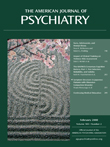Diagnostic Crossover in Anorexia Nervosa and Bulimia Nervosa: Implications for DSM-V
Abstract
Objective: The Diagnostic and Statistical Manual of Mental Disorders (DSM) is designed primarily as a clinical tool. Yet high rates of diagnostic “crossover” among the anorexia nervosa subtypes and bulimia nervosa may reflect problems with the validity of the current diagnostic schema, thereby limiting its clinical utility. This study was designed to examine diagnostic crossover longitudinally in anorexia nervosa and bulimia nervosa to inform the validity of the DSM-IV-TR eating disorders classification system. Method: A total of 216 women with a diagnosis of anorexia nervosa or bulimia nervosa were followed for 7 years; weekly eating disorder symptom data collected using the Eating Disorder Longitudinal Interval Follow-Up Examination allowed for diagnoses to be made throughout the follow-up period. Results: Over 7 years, the majority of women with anorexia nervosa experienced diagnostic crossover: more than half crossed between the restricting and binge eating/purging anorexia nervosa subtypes over time; one-third crossed over to bulimia nervosa but were likely to relapse into anorexia nervosa. Women with bulimia nervosa were unlikely to cross over to anorexia nervosa. Conclusions: These findings support the longitudinal distinction of anorexia nervosa and bulimia nervosa but do not support the anorexia nervosa subtyping schema.



